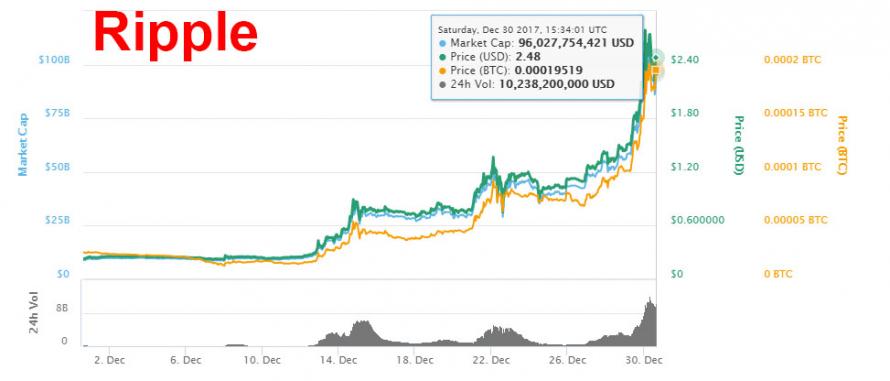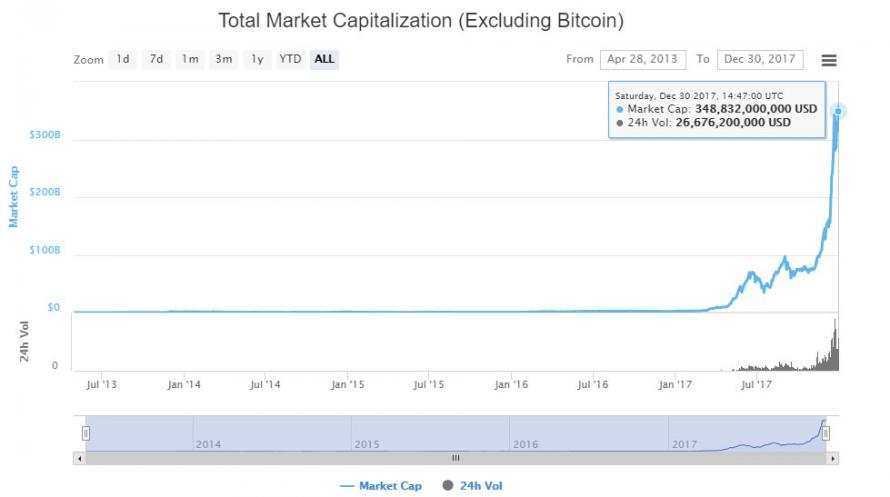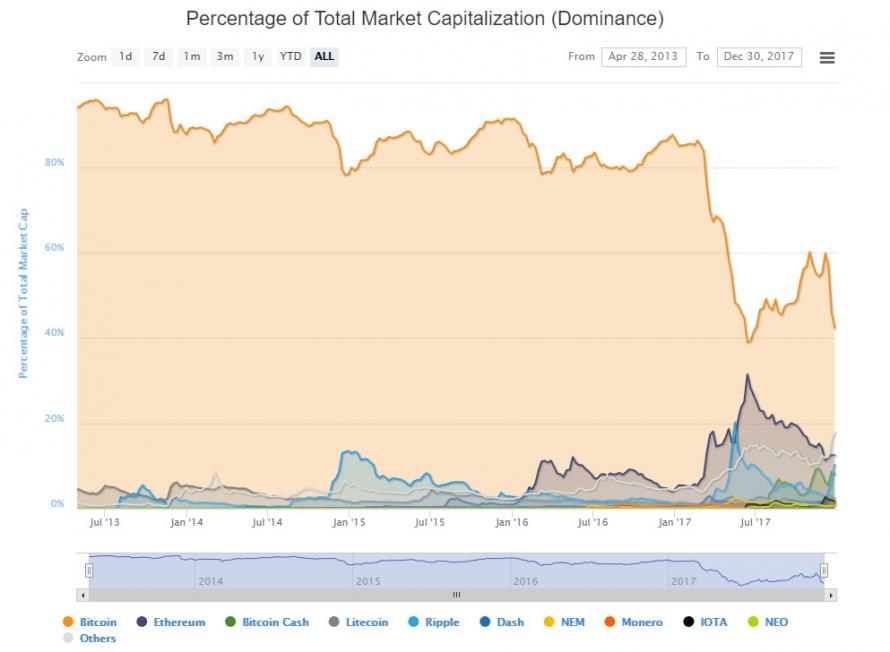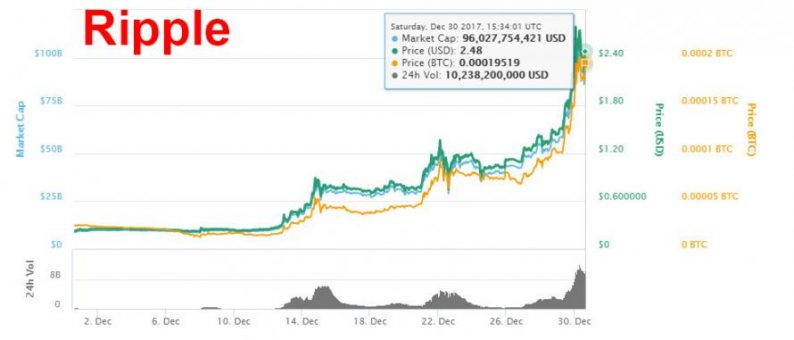Yesterday morning we highlighted that even as the broader cryptocurrency universe had gotten slammed following the latest threats out of South Korea, the price of the digital currency XRP, also called Ripple, exploded over the past week, and overtook Ethereum in market cap, making it the second biggest cryptocurrency in circulation after Bitcoin.
Then overnight the surge continued, with Ripple – which one week ago was trading around $1 – exploding even higher, rising as high as $2.80, or a $110 billion market cap and just over half that of Bitcoin’s $212 billion, before easing slightly to $2.42 as of this moment, implying a market cap of roughly $95 billion, up 33% from $1.84 yesterday.

As a result of the Ripple surge, the total market cap of the Cryptospace just shy of its all time high, at $560 billion as of this morning according to coinmarketcap…

… entirely as a result of the spike in non-bitcoin cryptos, and specifically Ripple.

The move also means that Bitcoin’s relative market cap share in the crypto universe has tumbled to just shy of its all time low, hitting 37.7% on Saturday morning, down from 85% at the start of the year.

Needless to say, Ripple’s ascent has been nothing short of spectacular, with the latest price of $2.40 putting XRP’s year-to-date gains at around 40,000%; dwarfing Bitcoin’s 2017 return. XRP began the year trading at less than a penny, with most of the gains coming in the last three weeks. On Dec. 11, XRP was trading at 25 cents. By comparison, bitcoin is up about 1,300%, and Ethereum is up 9,000%.
What prompted the exponential move in Ripple? One of the primary explanations focuses on the digital currency’s possible acceptance: indeed, for XRP, the bulk of the gains came after signs that Ripple has shown more progress in signing up banks to its closed-loop network, called RippleNet.
As the WSJ reported, earlier this month, the currency got a boost after a consortium of Japanese banks signed up to test its network. The company has more than 100 banks, mostly outside the U.S., signed onto its platform. It has not disclosed amounts, but has said that some of those banks have been using it in a live environment to move money, rather than just testing it as a concept.













Leave A Comment